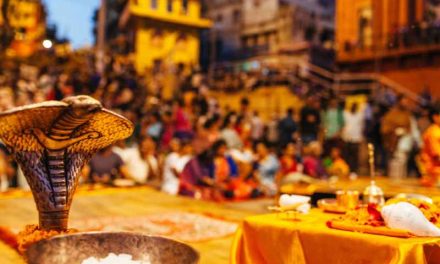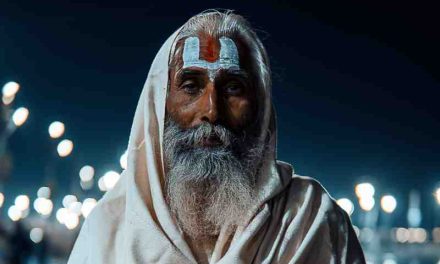The Aitareya Upanishad is one of the oldest and most important Upanishads, the ancient spiritual texts of Hinduism. It is associated with the Rigveda, the oldest and most revered of the four Vedas, which are the sacred scriptures of Hinduism. The Aitareya Upanishad consists of three chapters, which are part of the fourth, fifth, and sixth chapters of the second book of the Aitareya Aranyaka, a collection of ritual and philosophical texts.
The Aitareya Upanishad discusses three philosophical themes that are central to Hindu spirituality: the creation of the world and a man from the Atman (Soul, Universal Self), the theory that the Atman undergoes threefold birth and that Consciousness is the essence of Atman.
Creation
The first chapter of the Aitareya Upanishad deals with the creation of the world and its beings from the Atman. It states that in the beginning, there was only Atman, who was alone and desired to have company. He thought, “Let me create worlds.” He created three worlds: Bhur (the earth), Bhuvar (the atmosphere), and Svar (the sky). He then thought, “Let me create guardians for these worlds.” He created Agni (fire) for Bhur, Vayu (wind) for Bhuvar, and Aditya (sun) for Svar. He then thought, “Let me enter these three guardians and create names and forms.” He entered Agni as fire, Vayu as air, and Aditya as the sun. He then created various beings from these three elements.
He then thought, “Who will enjoy this creation?” He created Purusha (the cosmic man) from water. He gave him various organs and senses. He then subjected him to hunger and thirst so that he would seek food and drink. He created food from water and placed it in front of Purusha. Purusha tried to grasp it with his mouth, but he could not. He then created breath (prana) as the lord of all organs. Breath helped Purusha to grasp food with his mouth and digest it inside. Breath also distributed the essence of food to all organs.
After creating Purusha and making him fit for life, Atman thought, “How can I enter him?” He found an opening at the top of his head and entered through it. He became embodied in three places: in his eyes as sight, in his mind as thought, and in his heart as consciousness. Thus, he became the seer, thinker, and knower in Purusha.
Rebirth
The second chapter of the Aitareya Upanishad describes the theory of rebirth or transmigration of souls. It states that every being has three births: one from water (semen), one from the womb (fetus), and one from sacrifice (ritual). The first birth happens when a being enters a father’s body through food and water and settles in his semen. The second birth happens when a being enters a mother’s womb through sexual union and becomes part of a fetus. The third birth happens when a being emerges from the mother’s womb after nine months and enters the world.
The chapter also explains how a being’s actions determine its destiny after death. It states that those who perform good deeds go to heaven (Svar), those who perform evil deeds go to hell (Asur) and those who perform mixed deeds go to ancestors (Pitr). It also states that those who know Atman as their own self go beyond heaven, hell, and ancestors and attain liberation (Moksha).
Consciousness
The third chapter of the Aitareya Upanishad reveals that Consciousness is the essence of Atman and all beings. It states that Consciousness is Brahman, the supreme reality that pervades everything. It also states that Consciousness is Prajnanam, which means knowledge or intelligence. It says that Consciousness is what makes one aware of one’s own existence and identity.
The chapter also gives an example of how Consciousness manifests in different states of being: waking, dreaming, and deep sleep. It says that in the waking state, one sees external objects through one’s senses; in the dreaming state, one sees internal objects through one’s mind; and in the deep sleep state, one sees nothing but enjoys bliss through one’s heart. It says that these three states are like three branches of a tree that have different fruits but share the same root. The root is Consciousness, which is Atman.
The chapter concludes by saying that those who realize this truth become immortal. They transcend all duality and diversity and attain oneness with Brahman.
Works Cited:
(1) Know all facts about the Aitareya Upanishad – GaneshaSpeaks. https://www.ganeshaspeaks.com/spirituality/hinduism/upanishads/aitareya-upanishad/
(2) Upanishads: Summary & Commentary – World History Encyclopedia. https://www.worldhistory.org/article/1567/upanishads-summary–commentary/
(3) Aitareya Upanishad – Bharatpedia. https://en.bharatpedia.org/wiki/Aitareya_Upanishad





